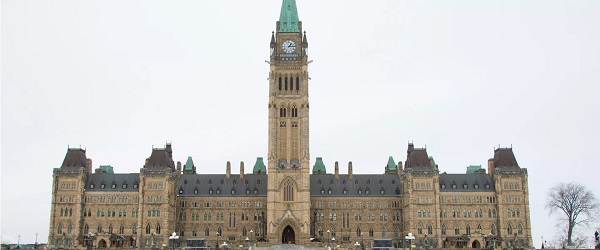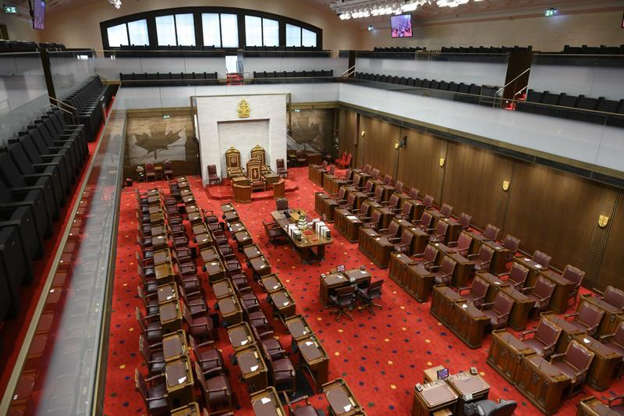Alberta
Alberta Budget 2021 Highlights

Maintaining responsible spending
Budget 2021’s responsible approach to spending will mean more investment in priority areas like health care, education and job creation.
Budget 2021 is built on 3 fiscal anchors:
- Keep net debt below 30% of GDP to help protect future generations from rising debt servicing costs.
- Deliver services more cost effectively by bringing spending in line with other comparator provinces.
- Re-establish a plan to balance the budget post-pandemic when a more stable level of predictability returns to the budgeting process.
Getting back on track
Operating expense
- In 2021–22, operating expense is $1 billion higher than 2020–21 forecast and begins to normalize, remaining relatively flat over the next 2 years.
Deficit
- $18.2 billion deficit is targeted for 2021–22, $2 billion less than the 2020–21 forecast.
- $11 billion and $8 billion deficits are targeted for 2022–23 and 2023–24 respectively.
Declining deficit can be attributed to decreasing expense as:
- the costs of the pandemic subside
- the government works to streamline and modernize service delivery
- revenue increases as the economy recovers
Budget 2021 funding highlights
Budget 2021 provides funding of:
- $23 billion for health services
- $8.2 billion operating expense for kindergarten to grade 12 (K to 12) education services
- $6.3 to $6.4 billion operating expense for social services ministries
- $136 million over 3 years for the Alberta Jobs Now program
- $166 million over 3 years for the Innovation Employment Grant
- $500 million in 2021–22 for additional investments in economic recovery
Investing in health care
Alberta’s government is increasing Health’s budget by over $900 million (or 4%) to $23 billion, and that’s excluding the impact of COVID-19.
- $5.4 billion for physician compensation and development (including academic medicine)
- $3.5 billion for community care, continuing care and home care programs, including $20 million over 4 years for palliative and end of life care
- $1.9 billion for drugs and supplemental health benefits.
- $34 million for children’s health supports to expand mental health and rehabilitation services for children and youth
- $140 million over 4 years for mental health and addiction services
Continuing the fight against COVID-19
Budget 2021 invests in continued supports to protect Albertans as we enter the second year of the pandemic.
- $1.25 billion COVID-19 Contingency to address health-care costs for responding to the pandemic, including surgical wait times and backlogs
- This is in addition to $2.1 billion spend in 2020-21
Getting health care back on track
Budget 2021 invests $16 billion for Alberta Health Services operations. Includes:
- Alberta Surgical Initiative
- Continuing Care Capacity Plan
- CT and MRI Access Initiative
Investing in health care capital
Budget 2021 commits $3.4 billion over 3 years for health related capital projects and programs, providing:
- $2.2 billion for health facilities, with $143 million for 5 new projects
- $766 million for Alberta Health Services self-financed capital, for parkades, equipment and other capital requirements
- $343 million for capital maintenance and renewal of existing facilities
- $90 million for health department IT projects
Preparing for recovery
Alberta’s Recovery Plan is a bold strategy to create jobs that get people back to work, build infrastructure and diversify our economy. This includes the acceleration of the Job Creation Tax Cut, which creates employment opportunities by making Alberta one of the most attractive jurisdictions in North America for new business investment. Budget 2021 will spend an additional $3.1 billion in 2021–22 to continue supporting recovery plan strategies.
Budget 2021 invests $1.7 billion more in capital funding in 2021–22 than what was planned in Budget 2020.
The 3-year Capital Plan now totals $20.7 billion and will support more than 50,000 direct and 40,000 indirect jobs through to 2024.
Diversifying the economy
In 2021–24, $1.5 billion invested in Alberta’s Recovery Plan.
Budget 2021 invests in established and emerging sectors that hold the greatest potential for growth and job creation, and are fundamental to our economic recovery including: energy; agriculture and forestry; tourism; finance and fintech; aviation, aerospace and logistics; and technology and innovation.
Economic recovery spending highlights
-
- Innovation Employment Grant supports small and medium-sized businesses that invest in research and development
- Developing framework to protect intellectual property in Alberta
- Investment and Growth Strategy supports emerging sectors while building on our existing strengths
- Invest Alberta provides supports and services to drive up investment and showcase Alberta as the best place in the world to do business
Alberta
CPP another example of Albertans’ outsized contribution to Canada

From the Fraser Institute
By Tegan Hill
Amid the economic uncertainty fuelled by Trump’s trade war, its perhaps more important than ever to understand Alberta’s crucial role in the federation and its outsized contribution to programs such as the Canada Pension Plan (CPP).
From 1981 to 2022, Albertan’s net contribution to the CPP—meaning the amount Albertans paid into the program over and above what retirees in Alberta received in CPP payments—was $53.6 billion. In 2022 (the latest year of available data), Albertans’ net contribution to the CPP was $3.0 billion.
During that same period (1981 to 2022), British Columbia was the only other province where residents paid more into the CPP than retirees received in benefits—and Alberta’s contribution was six times greater than B.C.’s contribution. Put differently, residents in seven out of the nine provinces that participate in the CPP (Quebec has its own plan) receive more back in benefits than they contribute to the program.
Albertans pay an outsized contribution to federal and national programs, including the CPP because of the province’s relatively high rates of employment, higher average incomes and younger population (i.e. more workers pay into the CPP and less retirees take from it).
Put simply, Albertan workers have been helping fund the retirement of Canadians from coast to coast for decades, and without Alberta, the CPP would look much different.
How different?
If Alberta withdrew from the CPP and established its own standalone provincial pension plan, Alberta workers would receive the same retirement benefits but at a lower cost (i.e. lower CPP contribution rate deducted from our paycheques) than other Canadians, while the contribution rate—essentially the CPP tax rate—to fund the program would likely need to increase for the rest of the country to maintain the same benefits.
And given current demographic projections, immigration patterns and Alberta’s long history of leading the provinces in economic growth, Albertan workers will likely continue to pay more into the CPP than Albertan retirees get back from it.
Therefore, considering Alberta’s crucial role in national programs, the next federal government—whoever that may be—should undo and prevent policies that negatively impact the province and Albertans ability to contribute to Canada. Think of Bill C-69 (which imposes complex, uncertain and onerous review requirements on major energy projects), Bill C-48 (which bans large oil tankers off B.C.’s northern coast and limits access to Asian markets), an arbitrary cap on oil and gas emissions, numerous other “net-zero” targets, and so on.
Canada faces serious economic challenges, including a trade war with the United States. In times like this, it’s important to remember Alberta’s crucial role in the federation and the outsized contributions of Alberta workers to the wellbeing of Canadians across the country.
Alberta
Made in Alberta! Province makes it easier to support local products with Buy Local program

Show your Alberta side. Buy Local. |
When the going gets tough, Albertans stick together. That’s why Alberta’s government is launching a new campaign to benefit hard-working Albertans.
Global uncertainty is threatening the livelihoods of hard-working Alberta farmers, ranchers, processors and their families. The ‘Buy Local’ campaign, recently launched by Alberta’s government, encourages consumers to eat, drink and buy local to show our unified support for the province’s agriculture and food industry.
The government’s ‘Buy Local’ campaign encourages consumers to buy products from Alberta’s hard-working farmers, ranchers and food processors that produce safe, nutritious food for Albertans, Canadians and the world.
“It’s time to let these hard-working Albertans know we have their back. Now, more than ever, we need to shop local and buy made-in-Alberta products. The next time you are grocery shopping or go out for dinner or a drink with your friends or family, support local to demonstrate your Alberta pride. We are pleased tariffs don’t impact the ag industry right now and will keep advocating for our ag industry.”
Alberta’s government supports consumer choice. We are providing tools to help folks easily identify Alberta- and Canadian-made foods and products. Choosing local products keeps Albertans’ hard-earned dollars in our province. Whether it is farm-fresh vegetables, potatoes, honey, craft beer, frozen food or our world-renowned beef, Alberta has an abundance of fresh foods produced right on our doorstep.
Quick facts
- This summer, Albertans can support local at more than 150 farmers’ markets across the province and meet the folks who make, bake and grow our food.
- In March 2023, the Alberta government launched the ‘Made in Alberta’ voluntary food and beverage labelling program to support local agriculture and food sectors.
- Through direct connections with processors, the program has created the momentum to continue expanding consumer awareness about the ‘Made in Alberta’ label to help shoppers quickly identify foods and beverages produced in our province.
- Made in Alberta product catalogue website
Related information
-

 International2 days ago
International2 days agoPope Francis has died aged 88
-

 International1 day ago
International1 day agoJD Vance was one of the last people to meet Pope Francis
-

 2025 Federal Election21 hours ago
2025 Federal Election21 hours agoOttawa Confirms China interfering with 2025 federal election: Beijing Seeks to Block Joe Tay’s Election
-

 International1 day ago
International1 day agoPope Francis Dies on Day after Easter
-

 2025 Federal Election20 hours ago
2025 Federal Election20 hours agoHow Canada’s Mainstream Media Lost the Public Trust
-

 Business2 days ago
Business2 days agoCanada Urgently Needs A Watchdog For Government Waste
-

 2025 Federal Election10 hours ago
2025 Federal Election10 hours agoBREAKING: THE FEDERAL BRIEF THAT SHOULD SINK CARNEY
-

 2025 Federal Election2 days ago
2025 Federal Election2 days agoCarney’s budget means more debt than Trudeau’s






